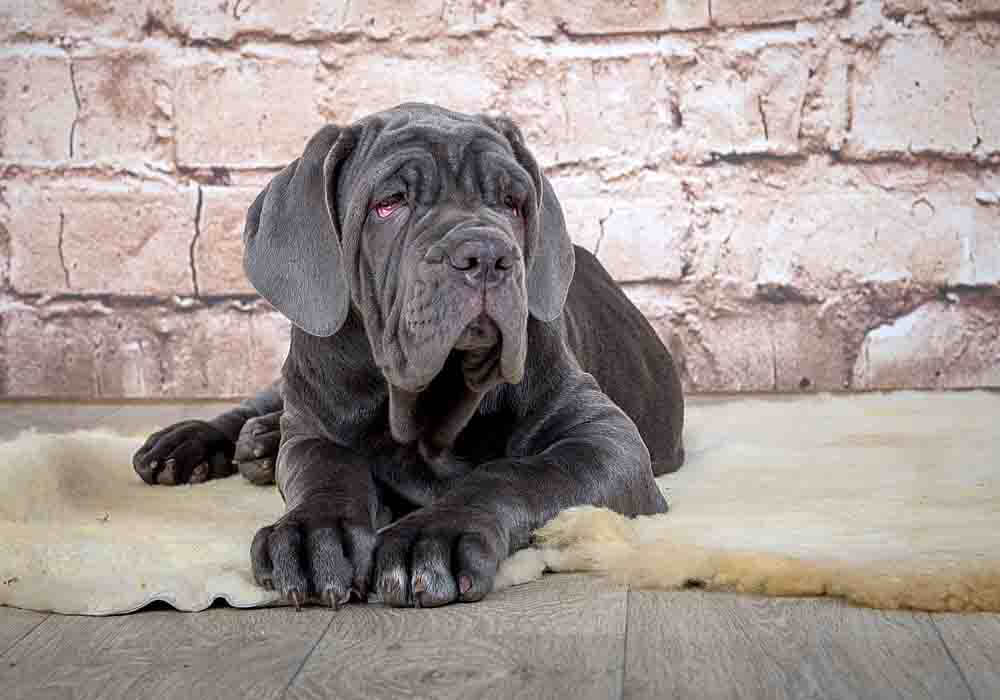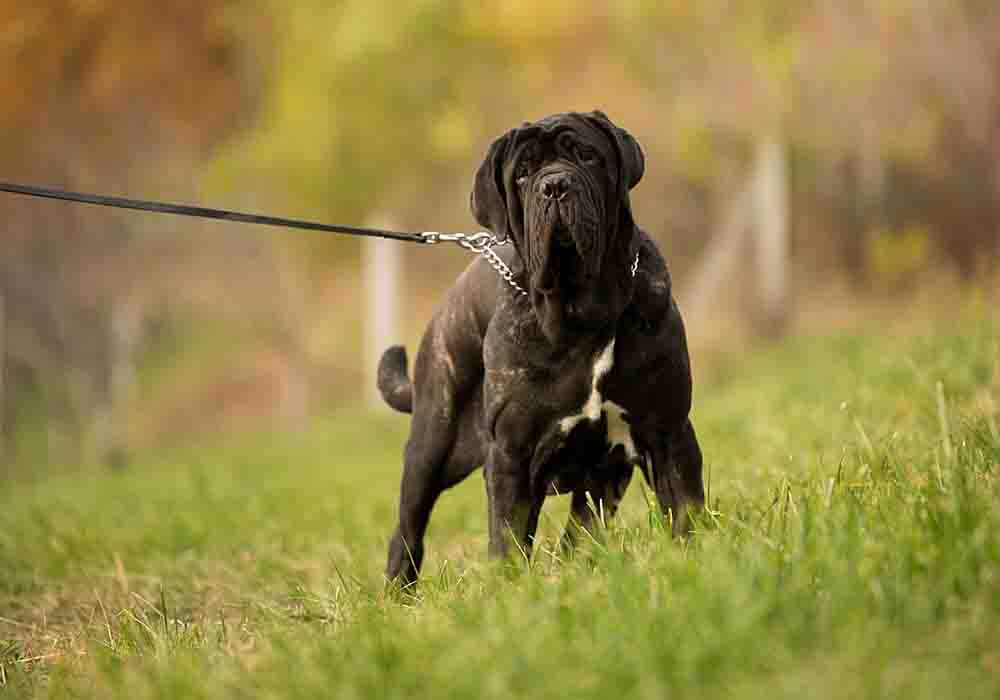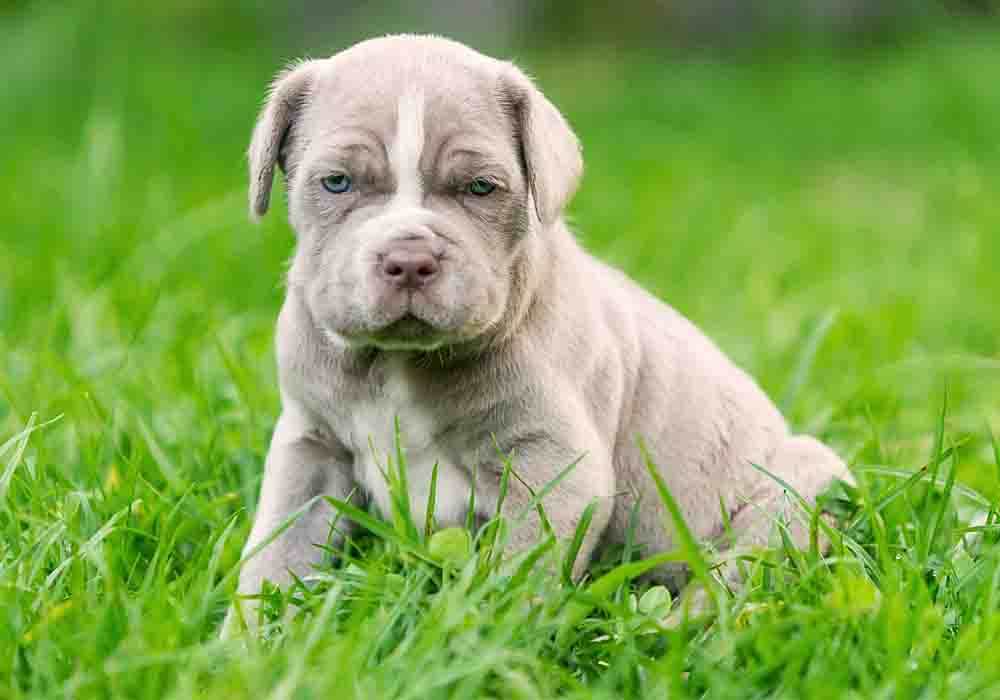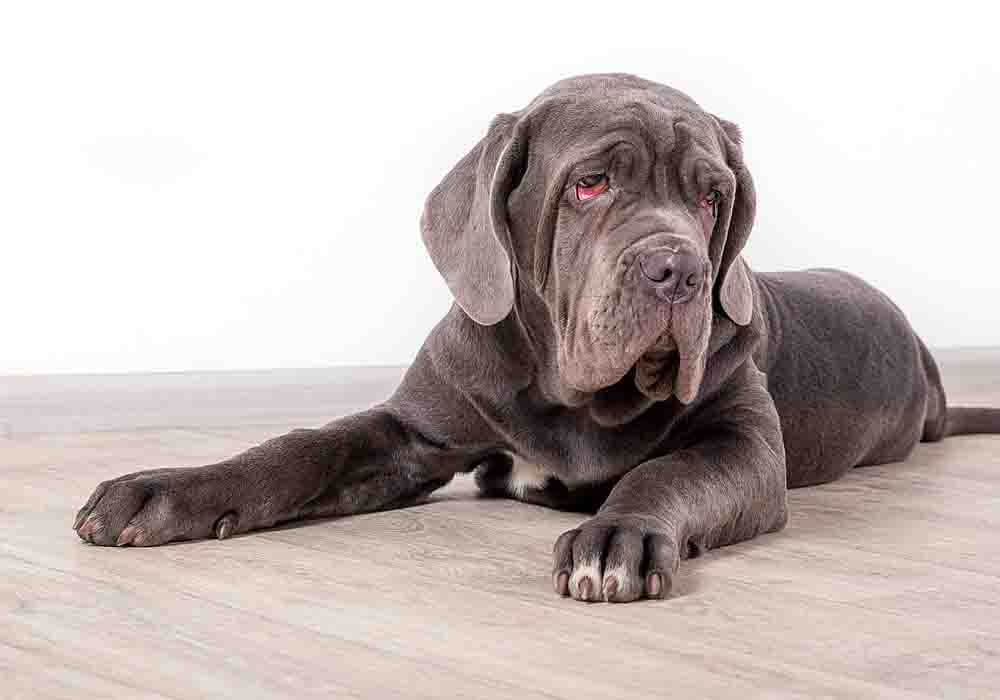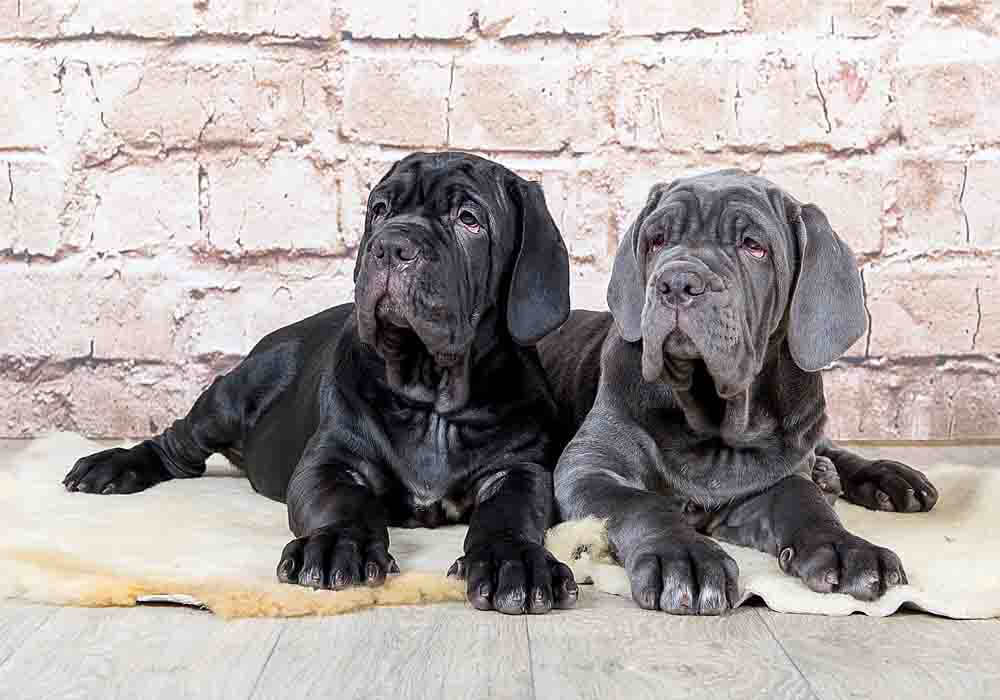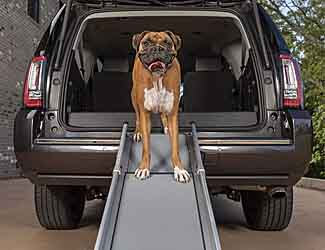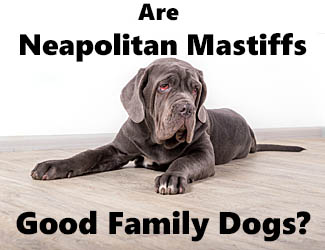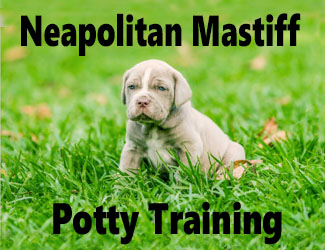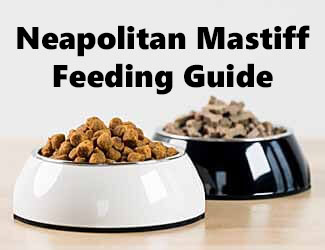Neapolitan Mastiff Breed
Profile
History, Characteristics, Health Issues
by Ken Alden
The Neapolitan Mastiff--a large and
ancient giant dog known for its intimidating appearance. With its history as a
war and fighting dog, dating back to the time of the man who conquered the
known world, Alexander the Great, it is safe to say this dog has a fascinating
history. But history is not all there is
to know about a dog that you plan to have as a pet. There’s plenty else you need to know about
them.
Neapolitan Mastiff Key Facts...
- Has an extremely long history back to 3000 BC
- Are excellent guard dogs
- Extremely loyal to their owners
- Does not require a lot of exercise
- Is a very difficult dog to train
- Can have a territorial streak towards other dogs
- If not trained properly, this dog can become overprotective and aggressive
The Neapolitan Mastiff is a difficult breed of dog to care for, and if you are a new dog owner, it may not be in your or the mastiff’s best interest to own if you don’t have prior experience taking care of dogs. This guide is going to provide everything that you need to know about this dog to see for yourself if this breed is right for you. Read More Below...
Pro-tip: Ever try lifting a Neapolitan Mastiff? Their weight can hurt not only your back but their joints when they hop down from cars, sofas or even your bed. To protect your back and theirs check out the best Mastiff ramps on Amazon.com now.
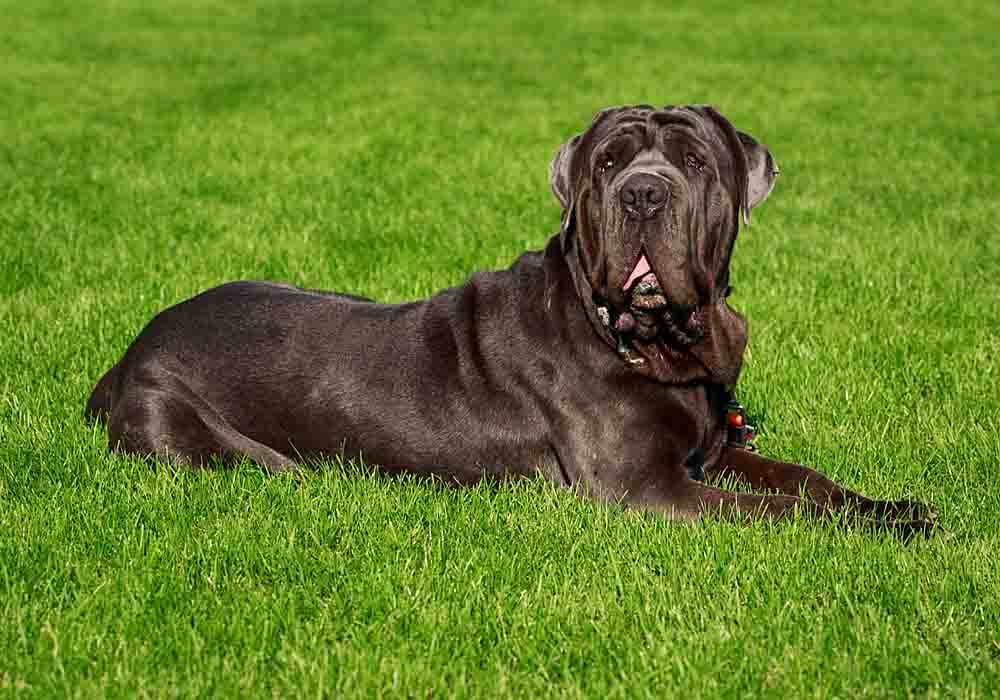
Neapolitan Mastiff Origin And History
This is an ancient breed of dog with an extremely long and interesting history. Its ancestors have seen wars and battles going back to the era of Alexander the Great, who is known for conquering the known world of his time.
Molosser dogs of Asia, the Middle East, and Northern Africa, the Neapolitan Mastiff’s ancestors, were brought to Greece in 300 BC by the conqueror and later saw use by the Roman Empire as war dogs when they invaded and conquered the area.
Sometime later, the Roman Empire launched an invasion against England and bred their mastiff type with the English Mastiff, and this led to the creation of the earliest version of this breed. The Neapolitan Mastiff also saw a lot of combat outside of the battlefield. It was often pitted against lions, elephants, tigers, bulls, jaguars, and even men. They even fought in Roman arenas like gladiators.
As things changed and civilization
moved forward, the Neapolitan Mastiff was able to thrive in the Neapolitan
region of Italy as protectors of family homes, owners, and property. However,
the Mastiff breed of dog came to near extinction as a result of World War II.
Since then, the breed has rebounded in popularity and came back from the brink
of extinction.
Neapolitan
Mastiff Appearance
The Neapolitan Mastiff (nicknamed the Mastino) is not a difficult breed of dog to pick out of a lineup. It has an unmistakable appearance with its large and imposing size and the noticeable wrinkles and folds in its skin that provides its fearsome appearance.
Its head is no different. The Neapolitan’s head is large with wrinkles and a droopy appearance with folds coming over and under its eyelids. While its ears are traditionally cropped short, they inherently have medium-length ears that hang over with a triangular shape.
As far as its body goes, it is longer than it is tall and underneath all of those folds of skin. It is also characterized by its broad and very muscular chest and legs and retains a thick bone structure. This dog also has a short coat of fur that will be found in colors of tawny, mahogany, blue, and black.
In terms of popularity, the Blue
Neapolitan Mastiff is the most popular of the breed and is followed behind by
the Black Neapolitan Mastiff. There are also Neos that are
brindle in color but are not referred to as Brindle Neapolitan Mastiffs. They
can also have white markings on their chest and toes, according to the AKC
(American Kennel Club.)
Neapolitan Mastiff Temperament And Personality
This dog breed has a personality and temperament that makes it a bit different from the other guard dog choices out there. It is a bit quieter than other dogs, and you will not hear it bark very often; however, that does not take away from its capabilities as a guard dog. A properly trained Neo will quickly and appropriately deal with a threat to its owners and home.
A potential problem with this breed is that it may be a bit aggressive and overly protective of its owners if it is not trained properly and socialized. This can be problematic and dangerous for children and friends that are not a part of its “pack.” If you have children and they are playing with others in what is perceived to be a fight by this dog, it may attack the other children.
With that said, a well-trained Neo is extremely loving and caring towards the members of its family. It is also going to be very calm as well and will not be aggressive or attack strangers if the situation does not call for it.
When it comes to training this dog, there is no need to train the impressively imposing breed to be a guard dog to protect the home. It is already preconditioned and bred to do the job. When it comes to training the Neo, your primary concerns are going to be obedience training and socialization, so it understands what is and is not a threat to you and your home.
This interesting article on our site shares even more about the Neapolitan Mastiffs temperament.
Pro-tip: Neapolitan Mastiff anxiety, aggression, destructive chewing, jumping up, fearfulness, and other behaviors can be controlled with the right training program.
Here’s a great course that
addresses these issues along with many other dog training basics: Check it out now!
Neapolitan Mastiffs And Kids
The subject of this breed and children can be a difficult situation to address. On the one hand, the Neo is known to be extremely sweet and caring with those they consider to be a part of their pack. That includes the adults and children within that pack.
One thing to pay attention to, however, is their size, as they may accidentally knock over a small toddler or baby without realizing it. With this in mind, it is important to supervise your children when they are around the Mastiff if you have small children in the home.
The true potential problems with children and Neo Mastiffs arise when the dog does not know a child that is in the home (visiting friends or relatives) and when the breed feels like a child is receiving more attention than itself, becoming jealous of the child. Yes, this is a jealous dog breed.
To make sure that this dog is not aggressive towards children that are not a part of its pack
within the home, you need to make sure that they are socialized a lot and early
to the greatest levels. The last thing any dog owner wants is for their dog to
attack a child because it perceived play as violence.
Keep in mind too that Mastiffs are so large there might be a tendency for children to view them as canine horses and hop on their backs during playtime which is a totally unsafe for both child and dog.
Thinking of bringing one of these dogs home as a family pet? Our article here answers all questions as to whether they'll be a good match for your family...
Are Neapolitan
Mastiffs Good Around Other Dogs & Pets?
This breed is a territorial and jealous dog. Not only do they tend to become jealous of children if they feel like they are not receiving the same amount of attention, but they will also become jealous of other dogs or animals within the home under the same circumstances.
The Neo Mastiff is capable of
getting along with other pets in the home fine if they are socialized from
puppy age to be around other animals, but even with socialization, they may
tolerate the other dog or animal. They are not going to be best friends by any
means. It is recommended for this breed of dog to be in a “one pet household”
if it is possible.
Training the Neapolitan Mastiff
While they are sweet and gentle with the members of their pack, Neos need to be socialized and receive obedience training as soon as possible to prevent unnecessary aggression with other dogs and strangers. When training one, you need to establish yourself as the alpha of the pack for it to take to the training.
When putting your Mastiff through socialization and obedience training, it is important to give them something to stay focused on, like making eye contact. Neapolitan Mastiffs, like all Mastiffs, communicate primarily through eye contact, and it will let them know your attitude towards them since they strive to keep their owners happy.
Also, it is important to be kind and
gentle throughout the training and offer them rewards and praise for performing
well when training this breed. Refrain from raising your voice as
they are sensitive dogs, and this can slow down the training process. Training
sessions need to be short, as well. If they are too long in duration, they will lose interest and fall asleep.
Proper Housing for the Neapolitan Mastiff
Despite its large and imposing size among dogs, the Neo is not a dog breed that you get as an outside dog. They prefer to be indoors and are completely fine with living in an apartment. If you think that you need to have a big house and a large yard for your dog, you would be wrong since they are not the most active of dogs and don’t require such an open space.
When it comes to letting the Neo outside to handle its “business” and stretch out those legs of theirs, it is best only to do that if you happen to have a fenced yard. This is due to them being protective of their owners and their home, and any passing individual can get bitten if they come too close to the home.
If you happen to live out in the countryside and don’t have neighbors for a bit of distance, this is not going to be an issue, and you don’t have to worry about your dog running off either. They tend to stick close to the home and will not wander off.
One thing to keep in mind, this is not
a dog you want to have if you are a clean freak. Mastiffs are not
hypoallergenic, and they will shed. Aside from that, they drool a lot from
those big, pendulous lips of theirs. If they shake their head, you can be sure
that there is going to be slobber raining down wherever they may be. If that
bothers you, you should look at a different breed of dog for your home.
Neapolitan Mastiff Exercise Requirements
This dog, like all other Mastiffs, are not very active dogs by nature and do not require very much physical activity to maintain their health; however, they can benefit both physically and psychologically from a little bit of play and short walks.
When you are walking them, try not to exceed more than a mile when walking them. A general rule of thumb, when it comes to Mastiffs, is to avoid walking them farther than you can carry them. They do not enjoy strenuous running and playing, and it does the breed more harm than good by trying to push them to exercise too hard.
The reason why you don’t want to push them too hard by taking long walks is that this breed will lie down wherever it feels like when it gets too tired or too hot. If you don’t want to carry the extremely large dog a long way back home, try keeping an eye as to how far you walk and don’t walk farther than you can carry the dog, if you need to.
When it comes to Mastiff puppies, do
not exceed walking them more than three blocks and don’t allow them to run up
and down stairs or jump from great heights. This can be detrimental to their
health in the long run and is considered unsafe for this breed of dog.
Pro-tip: Neopolitan Mastiff's (and their owners) love dog crates…and for good reasons. Crates keep dogs from mischief while you're away, are perfect for house training, for traveling by car, and provide the dog a place to de-stress. Check out the best Mastiff crates on Amazon.com now.
Mastiff Health Issues And Keeping Them Healthy
Mastiffs, due to being a large dog
breed, are more susceptible to certain conditions and diseases that can
severely affect their quality of life and also keep a loving owner worried. Please
keep in mind that the health issues shown below might never occur in your
Mastiff and are listed as possible health issues that may arise. Here
are some conditions that you need to have your pooch screened regularly:
- Seasonal allergies
- Eye problems
- Degenerative myelopathy
- Epilepsy
- Hip dysplasia
- Heat sensitivity
- Skinfold infections
- Cardiomyopathy
- Hypothyroidism
- Bone Cancer
There is another condition known as Bloat that you should have your veterinarian screen for the second you notice your Neo is not eating. Bloat is when a dog’s stomach distends and often twists. It is a life-threatening condition and is extremely uncomfortable for the dog. Unfortunately, it is also common for this breed as well.
If you notice anything out of the
usual such as being less active than usual and not
eating, take them to the vet.
Learn even more about the health issues known to Mastiffs in our article here.
Neapolitan Mastiff Care And Feeding
Taking care of a dog like this is not a simple task. Making sure you do it properly means making sure that you pay attention to feeding it properly, regularly grooming it to control shedding, and making sure it receives the appropriate amount of daily exercise. Below are some quick guidelines on the subject.
Feeding the Neapolitan Mastiff Appropriately
Obviously, these are giant dogs, reaching full-size within twenty-four months. With that in mind, it is important to focus on feeding them in a manner that is going to promote controlled, healthy growth that prevents health complications with the dog, such as skeletal disorders, heart problems, and various other health concerns attached to their nutrition.
When feeding this dog, it is important to avoid providing it with a diet that is extremely calorie dense that does not contain the proper calcium and phosphate levels within the diet. That will lead to the skeletal disorders and the various other health issues that we mentioned previously.
Instead, when it comes to your dog’s nutrition, according to veterinarians, you want to focus on providing the dog with a diet that has a percentage of protein that does not exceed 26% and has a calcium and phosphate ratio of 1:2:1.
When it comes to the nutrition of the Mastiff, you must feed it on a schedule and refrain from free eating to prevent the dog from becoming overweight, not exceeding four meals a day.
Recommended Dog Foods
for Neapolitan Mastiffs
With Mastiffs of all types, it is
important to give them the appropriate food for their size and activity levels
to maintain a healthy weight and quality of life. The dog food that we have recommended in this article of ours is great for this breed and is excellent for providing
bone and joint health while promoting a healthy coat in the dog.
Grooming the Neapolitan Mastiff to Manage Shedding and Promote Coat Health
Neos are easy to groom due to being short-haired dogs. Since they are not hypoallergenic, they will shed a bit, and to manage the shedding; you should brush them regularly. However, there are sometimes of the year that they tend to shed heavily, and a strong tooth comb is going to be necessary to remove the excess dead hair and dander.
When it comes to bathing your dog, it is necessary to bath them regularly. Depending on how active your dog is, you should do it anywhere from once a week to every six to eight weeks. Doing so will prevent the excessive build-up of dirt, debris, and dead hair that is common of dogs from being outside and also helps to promote a shinier, healthier coat.
This breed has large
pendulous lips, and they drool quite a bit. If you want to keep this under
control, as much as possible, try keeping wet wipes on hand to be able to
remove the slobber from their mouth quickly.
Neapolitan Mastiff...Final Thoughts
Neos are intriguing, giant, ancient dogs with a very long history. From their origins as war dogs, conquering the known world to becoming to fighting various beasts and men in Roman arenas, the near extinction, and becoming loyal and fierce guardians of the home, this Mastiff requires a bit of attention and experience to care for properly. It also requires a lot of training and socialization.
Take the time to consider whether or not having this dog is right for you. Keep in mind that the dog has a six to nine-year lifespan on average, and for it to have the best quality of life, you need to feed it appropriately and make sure you screen it for various potential health problems throughout its life.
Outside of that, they are amazing and loyal protectors of the home and are extremely affectionate towards its owners and family members and can be a great addition to the family and security of your home.

About the Author...
Ken Alden, a dedicated Mastiff owner for over eight years, is acclaimed for his expertise in care, grooming, and training. Read more About Me and my dog Shadow.
- Mastiff Guide Home ›
- Neapolitan Mastiff General Info ›
- Neapolitan Mastiff Breed Info
